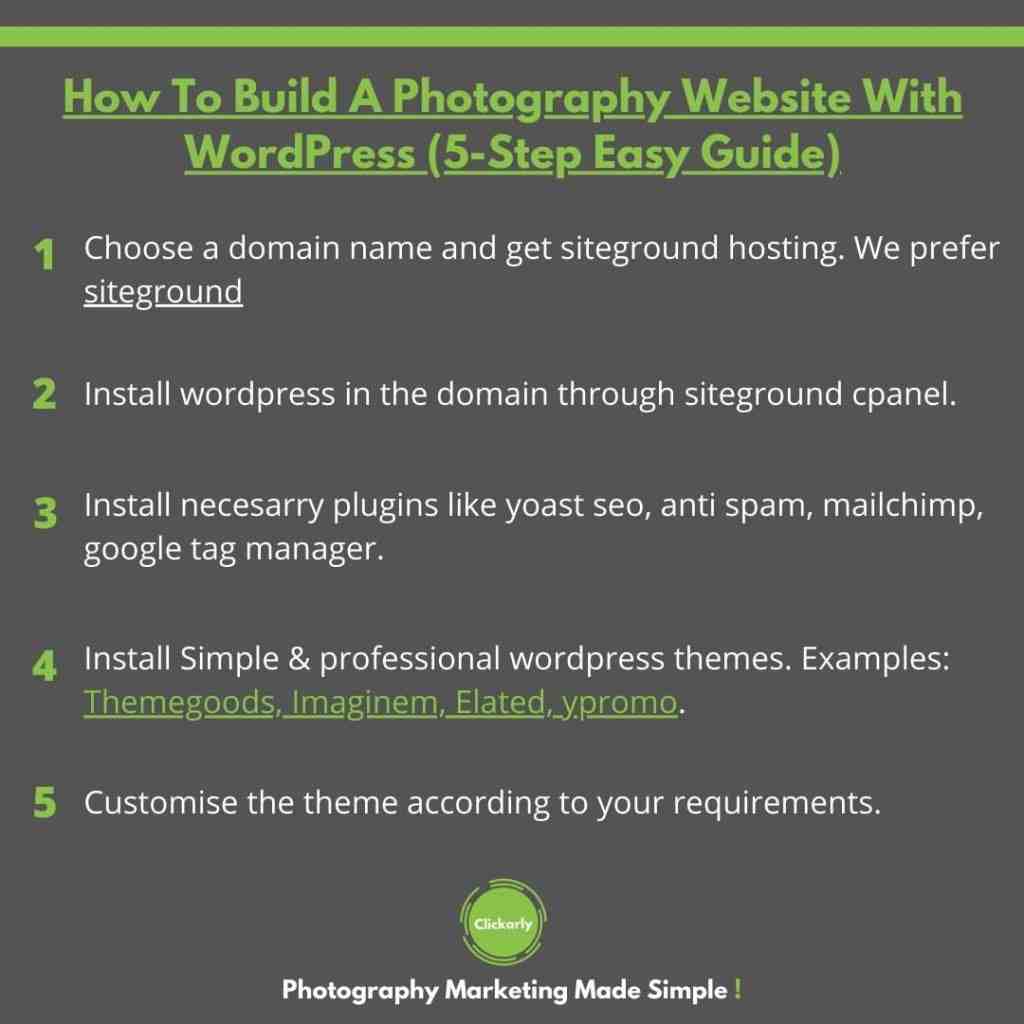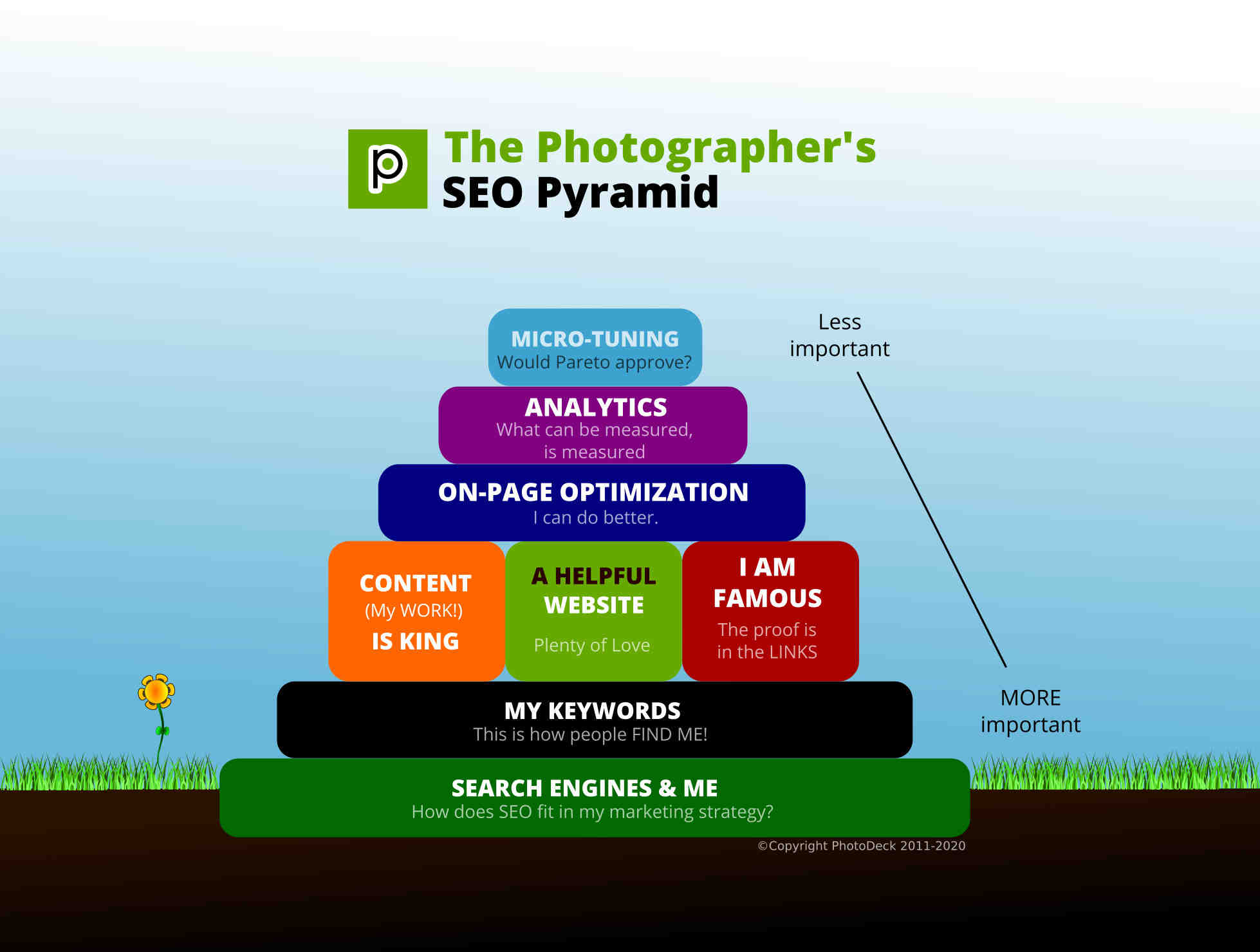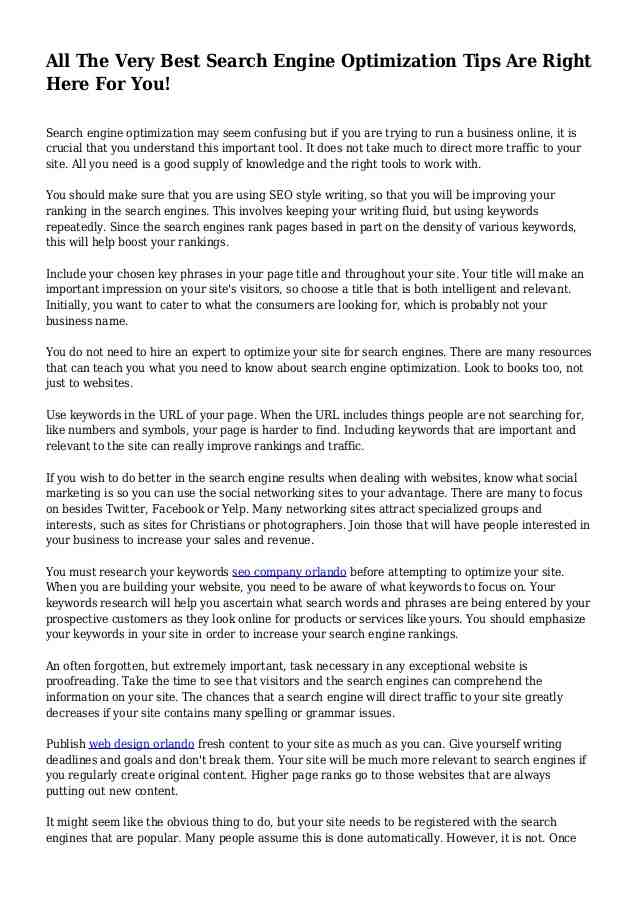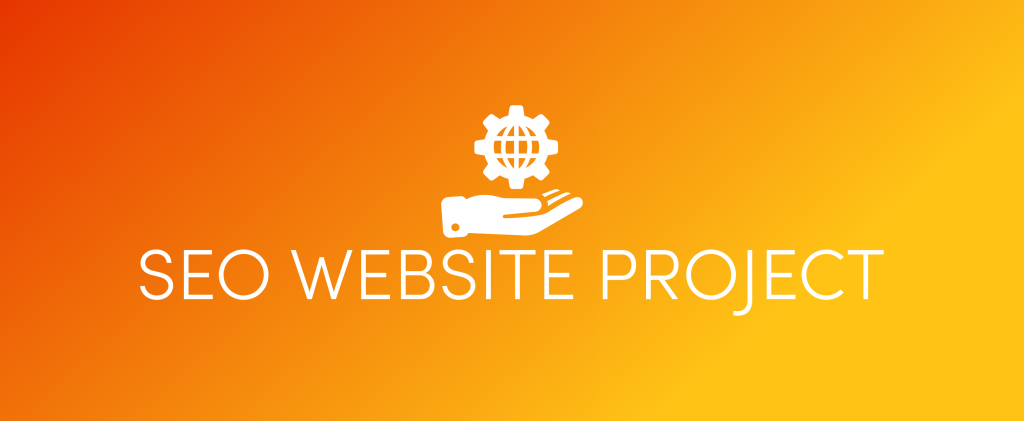Whether it’s the best chili recipes or the best photographers, people often start their web browsing journey with a search. Wonderful Machine may be one of the places where professional art buyers seek photographers, but many people simply search for Google, Bing, or DuckDuckGo. So, if you are a photographer and you want those search engines to find your website, you need to optimize it for those search engines.
Contents
WHAT IS SEO?

SEO stands for Search Engine Optimization, but the term is used in a broader sense to describe how a site presents itself to search engines. Search engines look for information on the web that matches search terms and return a list of links that match those terms. Imagine you are looking in a Word document, but in this case the whole internet is the Word document.
The hardest part of what search engines do is categorize this information. Of the millions of possible search results for a set of terms, which ones should the search engine return and in what order? When you type “best chili recipes”, which one should come up first?
To figure this out, search engines use sophisticated algorithms to calculate the usefulness of a particular web page for that visitor. To put it differently, the search results returned are an estimate of the likelihood that specific links are what you are looking for. The process of adjusting your site to match these algorithms is called search engine optimization or SEO.
UNIVERSAL SEO TECHNIQUES

In what follows, we will look at some proven SEO techniques that work for all types of websites that will be equally applicable to us.
Get analyzed:
Set up Google Analytics (GA) on your website so you can see the effects of your SEO. This should be mandatory for anyone with a website; without it, you won’t be able to tell if what you are doing is working at all. Although platforms like SquareSpace and Photofolio provide some stats, you want your data to go with you, wherever your site goes. GA will do it. And it’s free!
You can also sign up for Google’s Search Console to access more detailed information.
Do your research:
Try to imagine what keywords potential visitors will use when they search for your website. We recommend that you include those keywords in the optimizations below. Imagine you are an art buyer looking for photographers – what search terms would you use? Find out what kind of keywords your competitors are using and what are the most popular keywords for photography businesses in your specialty and choose the one you think you can compete on.
Not sure which keywords to use? Google is here to help.
Ride the long tail:
As tempting as it may be, don’t try to compete for title search terms like “best photographer”. These generic and very common search terms, called main terms, will be nearly impossible to rank, and the same goes for any other search that returns big brand names or celebrities. A much better use of your time is to focus on terms that include unique factors, such as your location and specialty, where there is less competition. This is the so-called long tail keyword.
Keep in mind that these are also the terms that serious art buyers will use. They don’t want someone else’s idea of the so-called “best photographer”. They want to find a list of potential photographers covering their specialty and required position. This is described as “intention” in the SEO world. The more specific a search term is, the more likely a user is to act on that search term.
These tags contain text that is not visible to visitors but can be seen by search engine robots. This text will likely appear as your site description in Google’s SERPs, allowing potential visitors to get an idea of what they’re looking for. Well-written meta text can go a long way in improving your click-through rate and, in turn, your search result ranking. Be concise, no longer than a tweet (140 characters).
Title your pages carefully:
Title your pages carefully: Make sure your website title describes who you are and what you do while including your selected keywords. Start with your main keywords and put your (company) name at the end. For a food photographer, an example title might be:
Food and Beverage Photography | Photograph by Joe Weaver
Most importantly, keep your site title concise and accurate. Google does not display web page titles beyond approximately 55 characters.
Wonderful Machine member photographer Inti St. Clair has great text for the title. Browser tabs always truncate the title text, as you can see, but the full version says “Inti St. Clair | Lifestyle | Health | Travel | Portrait photography. ” Our Bill Cramer uses “Philadelphia Environmental Portrait Photographer, Bill Cramer”, which is also fantastic. Both contain the name and the specialty.
Maintain a blog and update it frequently:
This is a rich source of keywords for search engines, and the SEO benefits your blog provides will automatically be related to your main website (provided they both exist in the same domain, that is). While writing isn’t photographers’ preferred medium of expression, a successful web marketing strategy will require a blog. Learn more about this in our article on building your web presence and get some writing tips for creatives who hate writing.
Get a word in edgewise:
There are tons of hidden places you can squeeze into the text. For example, you can use page titles, gallery titles, link titles / anchor text, page URLs, and image filenames to insert text into your site. You may or may not have control over some of this information, but if you can control it, make good use of it. Use human-readable syntax and include keywords when appropriate.
Use your “About” page effectively:
Where you have the opportunity to have user-readable text, such as your about page, make the most of it. Our food photographer in Minnesota might write the following as the first sentence of his about page:
Alex is a Minnesota-based food photographer with three decades of experience working with corporate clients and agencies to create advertising photography in Minnesota and throughout the Midwest.
As a photographer, you should cultivate your audience on social media. This is invaluable for SEO purposes. While having widely shared Facebook and Twitter posts may or may not directly impact search results, the visitors your social media channels drive to your website will help to organically increase your search ranking. Even if you bring a social media user to your Facebook page via an ad, any links they click on while on your page are organic. It is also not unusual for creatives to find and hire photographers via Facebook and Instagram. Don’t spend all your time on it, but don’t ignore it.
Just make good stuff:
By far, the most important factor in your website’s success is high-quality content. While all the tips and tricks we recommend are valuable, they won’t do as much for you as excellent content. Make sure your site is easy to navigate, show great images relevant to your specialty, and clearly indicate who you are as a photographer.
POTENTIAL (SEARCH ENGINE) PITFALLS AND PROBLEMS:

Stay fresh:
SEO changes as rapidly as the internet, so techniques that were all the rage in 2013 could be useless today or even harmful. As search engines refine their results, they will move from using one metric to another, and to maintain your ranking you will need to keep up. Unfortunately, you can’t just optimize once and leave it forever. Review the process annually if possible.
Wear the white hat:
Search engines now penalize sites that implement so-called “black hat” SEO techniques. This means that if you try to insert a bunch of keywords into your HTML code, inaccurately describe your site in meta tags or title tags, spam blog comments, hide invisible or lowercase text on your site, or any other recognized bad practice, you will lose position on search engine results pages.
Practice patience:
You won’t see results right away. This is a process of at least four to six months. But keep an eye on your analytics – if you do it right, you’ll see a slow but steady increase in the number of visitors to your website.
Put away your magic wand:
Neither of these techniques, taken alone, will significantly improve your search engine rankings. Consider each a small step in the right direction, cumulatively and progressively leading to better results over time.
Take the broad view:
While we have focused on overall site optimization, this is not the full picture. There is a whole world of search marketing techniques beyond this, but implementing the above steps correctly will be important to any subsequent marketing strategy.
FURTHER READING

Consider the above just a brief introduction. There is much more to do and learn if you really want to get into it. If you are interested in delving into SEO, you have an internet full of information at your fingertips. Here are some great starting points:
Originally written by Thomas Lawn in 2016. Revised by Ashley Vaught in 2021
About the Author

Ashley Vaught is a philosopher and lecturer based in Philadelphia, Pennsylvania. He is the editorial director and SEO consultant of Wonderful Machine. This is an art production agency with a network of 600 photographers in 44 countries, and if you need help with your social media presence, you can contact them via email. You can connect with Ashley via LinkedIn and learn more about him on his website. This article was also posted here and shared with permission.
